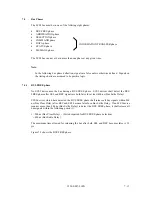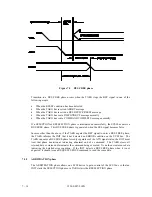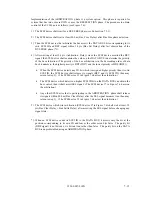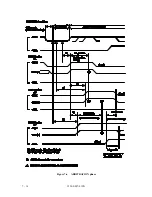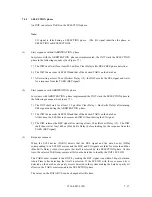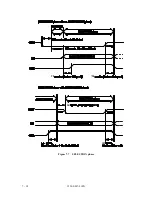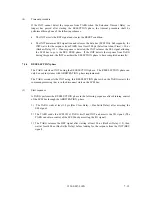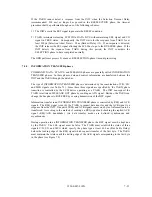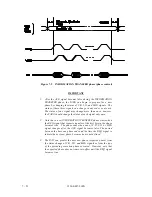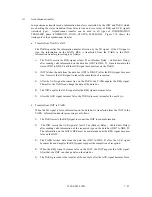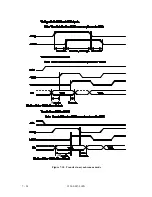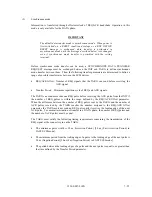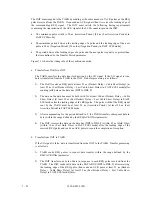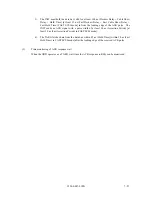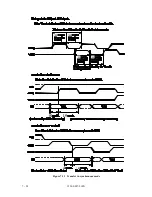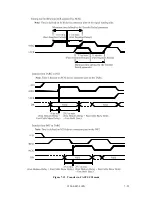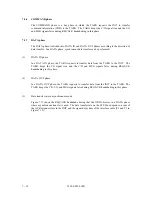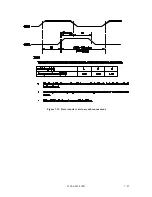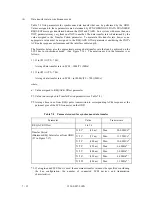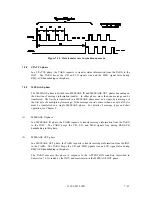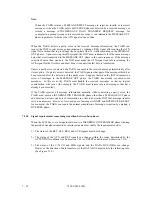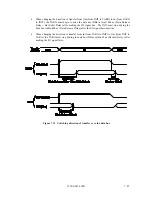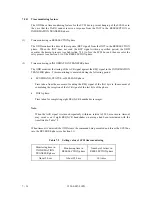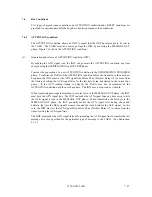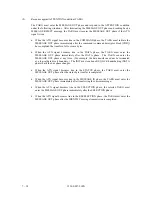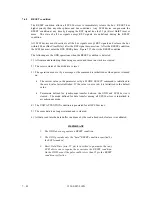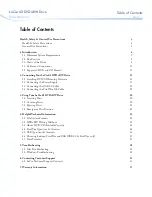
C156-E097-01EN
7 - 25
(2)
Synchronous mode
Information is transferred through offset-interlock of REQ/ACK handshake. Operation in this
mode is only available for the DATA phase.
IMPORTANT
The default data transfer mode is asynchronous mode. When power is
first switched on, a RESET condition develops or a BUS DEVICE
RESET message is exchanged, data transfer is performed in
asynchronous mode until the message described below is exchanged,
even if synchronous mode transfer is permitted with the setting
terminal.
Before synchronous mode transfer can be used, a SYNCHRONOUS DATA TRANSFER
REQUEST message must be exchanged between the INIT and TARG to define synchronous
mode transfer between them. Then, the following transfer parameters are determined to define a
range of possible transfer rates between the SCSI devices.
•
REQ/ACK Offset: Number of REQ signals that the TARG can send before receiving the
ACK signal.
•
Transfer Period: Minimum repetition cycle of REQ and ACK signals.
The TARG can send more than one REQ pulse before receiving the ACK pulse from the INIT if
the number of REQ pulses is within the range defined by the REQ/ACK Offset parameter.
When the difference between the number of REQ pulses sent by the TARG and the number of
ACK pulses received by the TARG reaches the number assigned to the REQ/ACK Offset
parameter, the TARG must not send an REQ pulse until it receives the leading edge of the next
ACK pulse. For normal termination of transfer in a DATA phase, the number of REQ pulses and
the number of ACK pulses must be equal.
The TARG must satisfy the following timing requirements concerning the transmission of the
REQ signal at the connector pin on the TARG:
•
The minimum pulse width is 90 ns (Assertion Period) [30 ns (Fast Assertion Period) in
FAST SCSI mode].
•
The minimum period from the trailing edge of a pulse to the leading edge of the next pulse is
90 ns (Negation Period) [30 ns (Fast Negation Period) in FAST SCSI mode].
•
The period between the leading edges of a pulse and the next pulse is equal to or greater than
the time defined by the Transfer Period parameter.
Summary of Contents for MCE3064SS
Page 1: ...C156 E097 01EN MCE3064SS MCF3064SS OPTICAL DISK DRIVES PRODUCT MANUAL ...
Page 3: ...This page is intentionally left blank ...
Page 31: ...This page is intentionally left blank ...
Page 52: ...C156 E097 01EN 2 21 Figure 2 3 Example of alternate processing ...
Page 53: ...This page is intentionally left blank ...
Page 72: ...C156 E097 01EN 3 19 Figure 3 17 SCSI cable connector ...
Page 81: ...This page is intentionally left blank ...
Page 97: ...4 16 C156 E097 01EN Figure 4 5 SCSI connection check 2 ...
Page 99: ...This page is intentionally left blank ...
Page 113: ...This page is intentinally left blank ...
Page 119: ...7 2 C156 E097 01EN Host system A Host system B Figure 7 1 Example of SCSI configuration ...
Page 133: ...7 16 C156 E097 01EN Figure 7 6 ARBITRATION phase ...
Page 135: ...7 18 C156 E097 01EN µ Figure 7 7 SELECTION phase 30 30 30 30 ...
Page 141: ...7 24 C156 E097 01EN Figure 7 10 Transfer in asynchronous mode 18 18 ...
Page 145: ...7 28 C156 E097 01EN Figure 7 11 Transfer in synchronous mode 11 11 11 11 43 18 43 18 ...
Page 146: ...C156 E097 01EN 7 29 Figure 7 12 Transfer in FAST SCSI mode ...
Page 148: ...C156 E097 01EN 7 31 Figure 7 13 Data transfer rate in asynchronous mode ...
Page 158: ...C156 E097 01EN 7 41 Figure 7 17 RESET condition ...
Page 160: ...C156 E097 01EN 7 43 Figure 7 18 Bus phase sequence 1 of 2 ...
Page 161: ...7 44 C156 E097 01EN Figure 7 18 Bus phase sequence 2 of 2 ...
Page 167: ...This page is intentionally left blank ...
Page 171: ...This page is intentionally left blank ...
Page 181: ......



